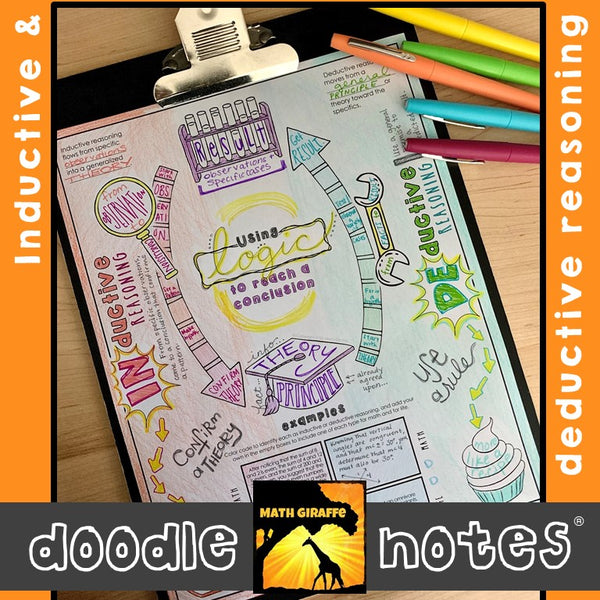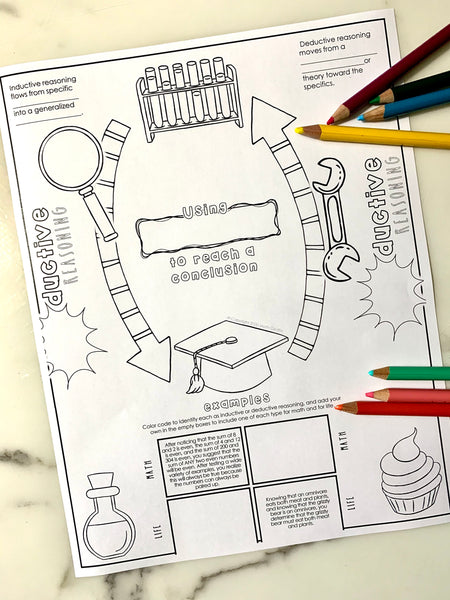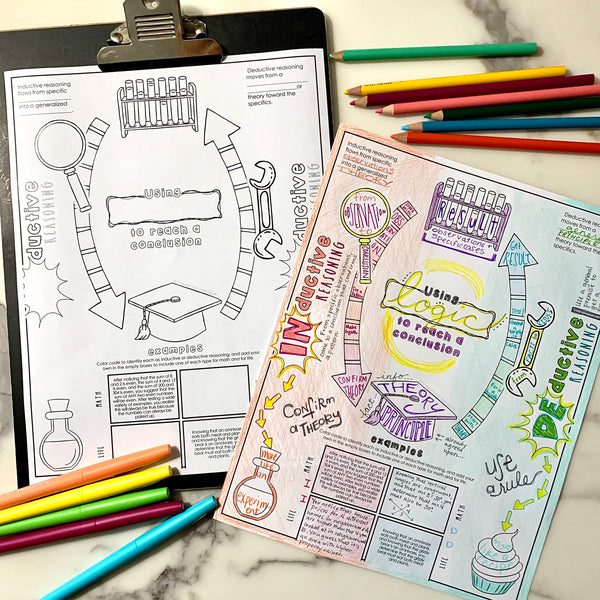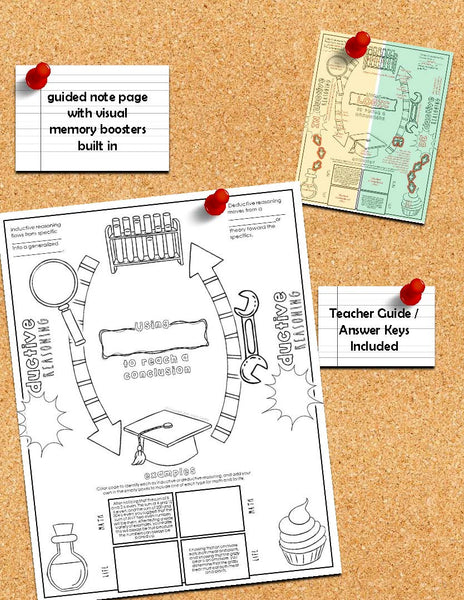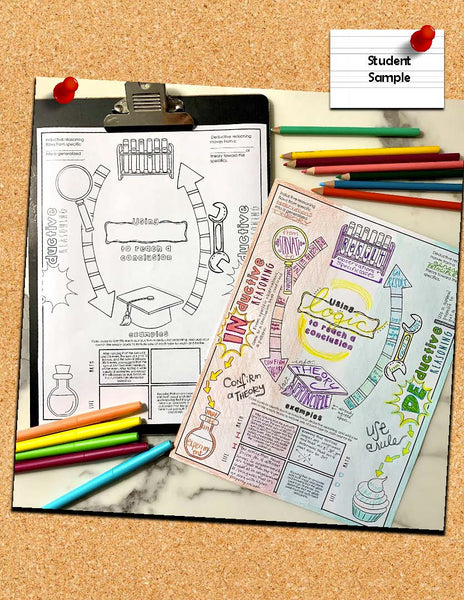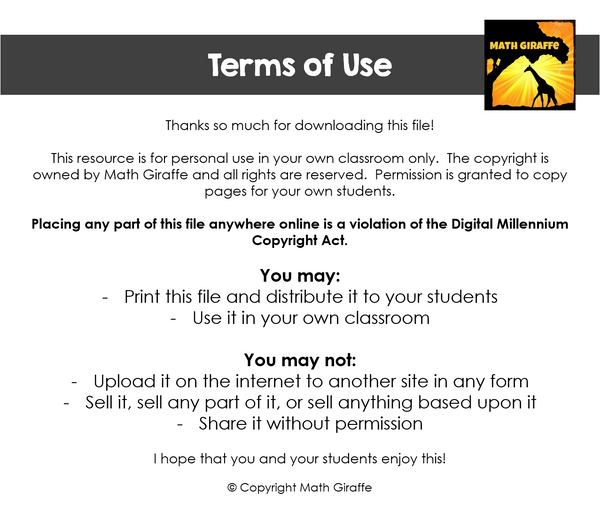Inductive vs. Deductive Reasoning Doodle Notes
Deductive and Inductive Reasoning for Logic, Math, or High School Geometry: 1 page visual interactive "doodle notes" set -
When students color or doodle in math class, it activates both hemispheres of the brain at the same time. There are proven benefits of this cross-lateral brain activity:
- new learning
- relaxation (less math anxiety)
- visual connections
- better memory & retention of the content!
Students fill in the sheets, answer the questions, and color, doodle or embellish. Then, they can use it as a study guide later on. Graphic doodle and sketch notes take full advantage of Dual Coding Theory (the way brains process visual and linguistic information) to maximize retention.
In this doodle note lesson:
- Using logic to reach a conclusion
- Definitions for inductive and deductive reasoning
- Differences between the process for these two types of logical reasoning
- Interactive graphic memory triggers
- Examples classifying inductive and deductive reasoning in both math and real-world situations
- Visual layout and graphic analogies
Check out the preview images for more detail about this item and the research behind it.
Visual note taking strategies like sketch notes or doodle notes are based on dual coding theory. When we can blend the text input with graphic/visual input, the student brain processes the information differently and can more easily convert the new learning into long-term memory.
This strategy also integrates the left and right hemispheres of the brain to increase focus, learning, and retention!







